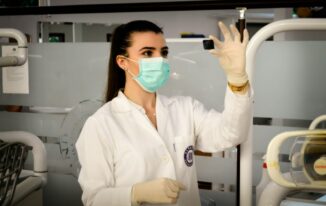Lymphedema is a condition that affects many individuals, characterized by swelling due to the accumulation of lymphatic fluid in the body, particularly in the limbs. Given its impact on quality of life, finding effective management strategies is crucial for patients. Massage for lymphedema has emerged as a significant component in the holistic approach to lymphedema management.
Lymphedema: Causes, Symptoms, and Diagnosis
Lymphedema is generally caused by damage to or removal of lymph nodes, often as a consequence of cancer treatment. The obstruction of lymph flow leads to the accumulation of lymphatic fluid, resulting in swelling. Primary lymphedema, although less common, is caused by malformations in the lymphatic system present from birth.
Symptoms of lymphedema include swelling in one or more parts of the body, typically the arms or legs. This swelling can range from mild to severe and may limit mobility and cause discomfort or pain. Patients may also experience repeated infections, thickening of the skin, and feelings of heaviness or tightness in affected areas.
Diagnosing lymphedema involves a combination of patient history, physical examination, and specialized imaging like lymphoscintigraphy. Unfortunately, there is no cure for lymphedema, but with proper management, the severity can be reduced and complications prevented. It’s essential to use a comprehensive approach that can include physical therapy, compression garments, and specialized massage techniques catered to lymphedema patients’ needs.
Healthcare professionals use several criteria to assess the severity and progress of lymphedema. These include the volume of the affected limb, the extent of discomfort, and the impact on daily activities. Accurate and early diagnosis paves the way for effective management plans, of which massage therapy can be an integral part.
The Science Behind Massage Therapy for Lymphedema
The lymphatic system’s primary role is to transport lymph, a fluid containing white blood cells, throughout the body. When this system is disrupted, massage therapy, particularly manual lymphatic drainage (MLD), can help stimulate the flow of lymph through healthy lymph vessels. Professional therapists use this technique to reroute fluid from swollen areas to unaffected lymphatic pathways, thus reducing swelling.
Manual lymphatic drainage is a gentle massage technique that involves light strokes and soft pumping movements to move the skin in the direction of lymph flow. This process encourages the drainage of lymph out of the affected limb and into areas with functioning lymph vessels. By doing so, MLD has shown efficacy in decreasing the swelling and associated symptoms of lymphedema.
Research also indicates that consistent massage can help maintain the reduction in limb volume achieved through other treatments. Combining MLD with compression therapy further enhances the effects, possibly preventing the backflow of lymph fluid.
Apart from physical benefits, massage therapy may also offer psychological advantages by promoting relaxation and reducing stress. Given that lymphedema can impact emotional well-being, the value of a supportive and soothing environment provided during massage sessions should not be overlooked.
How to Safely Incorporate Massage Into Lymphedema Treatment Plans
When incorporating massage into lymphedema treatment, it is essential to consult with medical professionals and certified lymphedema therapists. They will assess whether massage therapy is appropriate and determine the correct frequency and method. It is recommended that treatment start with lighter pressure and intensity to monitor how the body responds and to prevent potential harm.
Finding a therapist who specializes in lymphedema care is crucial. These professionals have undergone specific training to understand the complexities of the disease and how to treat it without causing further damage. They are also equipped to tailor massage techniques to each individual’s unique situation, ensuring a personalized and effective approach to symptom management.
Equally important is monitoring skin care and avoiding potential injury to affected regions during massages. Maintaining good hygiene, utilizing proper moisturizers, and being vigilant for any signs of infection are paramount. Lymphedema can increase the risk of infection, so attention to detail during massage sessions can make a significant difference in the treatment outcome.
Additionally, patients should be informed about the risks and signs of complications such as lymphangitis or deep vein thrombosis. Being educated about the possible adverse effects allows patients to actively participate in their treatment and promptly report any concerns to their healthcare provider. An educated and engaged patient, when supported by qualified professionals, ensures a safe and beneficial inclusion of massage in a lymphedema treatment plan.
Overall, massaging techniques play a transformative role in managing lymphedema symptoms. From reducing physical discomfort to providing emotional support, massage therapy offers a valuable tool in the comprehensive management of this condition.



